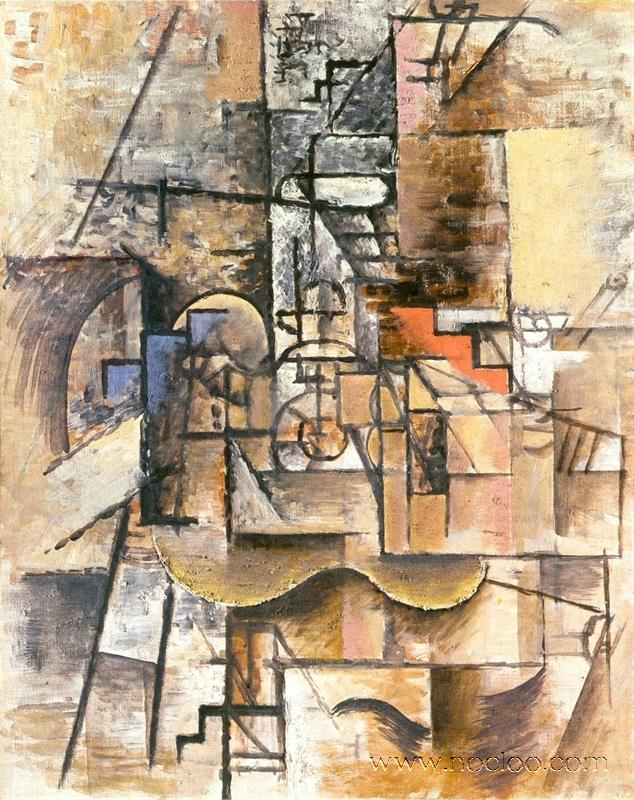

What is a characteristic of Synthetic Cubism? In an attempt to classify the revolutionary experiments made by Pablo Picasso, Georges Braque and Juan Gris when they were exponents of cubism, historians have tended to divide cubism into two stages.The early phase, generally considered to run from 1908-12 is called analytical cubism and the second is called synthetic cubism. Analytical Cubism - The first stage of the Cubism movement was called Analytical Cubism. Most scholars are agreed that the former covers a two-year period that ended around 1912 and by which time it had evolved into. The method included sticking different kinds of paper in their work, which described Synthetic Cubism. The second and final phase of cubism is Synthetic Cubism: While in the analytical phase the cubists were deconstructing and then reassembling bits and pieces to suggest objects as seen from multiple angles, in the synthetic. Analytical cubism was about breaking down an object (like a bottle) viewpoint-by-viewpoint, into a fragmentary image whereas synthetic cubism was about flattening out the image and sweeping away the last traces of allusion to three-dimensional space. Whereas Analytic cubism was about breaking down an object into a fragmentary image and analyse it, Synthetic cubism, as the name suggest, emphasise the combination or. Cubism is basically divided into two categories. Analytic cubism - definition of Analytic cubism by The. Analytical cubism was developed before Synthetic cubism. Rather than the collage work that popped up in Synthetic Cubism, Analytical Cubism was almost entirely flat work executed with paint. If the analytic period had sacrificed the unity of the object by housing it in a space revealing its essence, the phase of synthetic cubism finds a way to restore it without giving up spatial innovations. This approach was such that in many cases the works became practically abstract, since the plans became unrecognizable. In an attempt to classify the revolutionary experiments made in cubism by Georges Braque, Pablo Picasso and Juan Gris, historians tend to divide cubism into two stages, analytical and synthetic. Explore cubism and learn about the stylistic differences between analytical and synthetic cubism. I want to express the absolute, not merely the factitious woman.Cubism is an art form that focuses on geometric shapes in art. It suggests emotion, and I translate that emotion into art.
#Picasso synthetic cubism plus
Nature is mere a pretext for decorative composition, plus sentiment.
I must, therefore, create a new sort of beauty, the beauty that appears to me in terms of volume of line, of mass, of weight, and through that beauty interpret my subjective impression. I couldn't portray a women in all her natural loveliness.I haven't the skill. Neither the good nor the true neither the useful nor the useless. Pablo Picasso The goal I proposed myself in making cubism? To paint and nothing more. We only wanted to express what was in us. Georges Braque Let them eat their fill of their square pears on their triangular tables! Henri Matisse When we discovered Cubism, we did not have the aim of discovering Cubism. One cannot escape from one's own epoch, however revolutionary one may be. If I have called Cubism a new order, it is without any revolutionary ideas or any reactionary ideas. that was the earliest Cubist painting - the quest for space.
#Picasso synthetic cubism manual
So I began to paint chiefly still lifes, because in nature there is a tactile, I would almost say a manual space.
#Picasso synthetic cubism how to
It confused people: they said, 'Things don't look like that!' David Hockney What greatly attracted me - and it was the main line of advance of Cubism - was how to give material expression to this new space of which I had an inkling. Cubism was an attack on the perspective that had been known and used for 500 years.


 0 kommentar(er)
0 kommentar(er)
